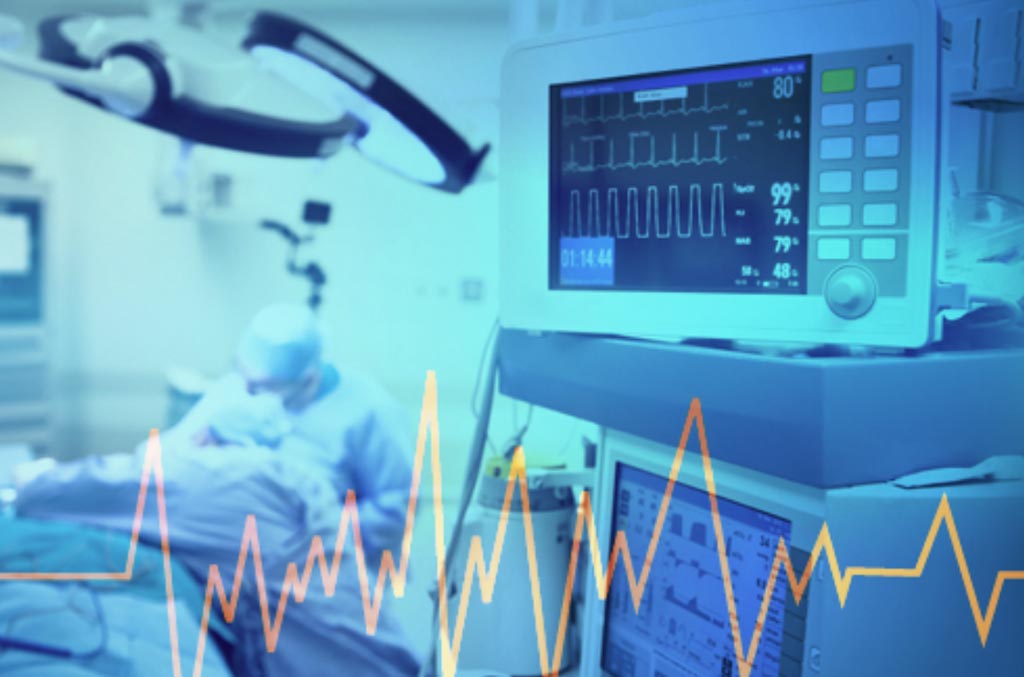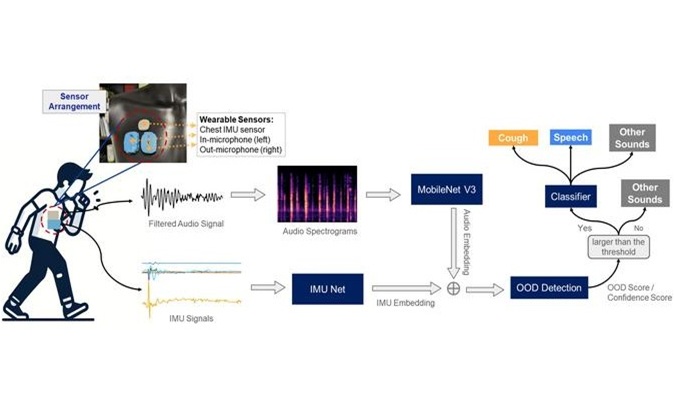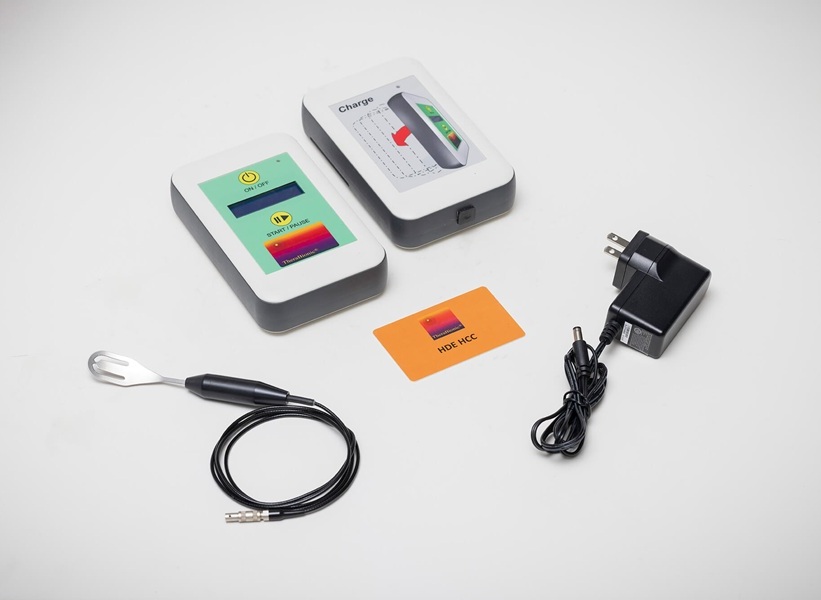Global Multiparameter Patient Monitoring Devices Market to Reach USD 6 Billion by 2025
|
By HospiMedica International staff writers Posted on 18 Mar 2020 |

Illustration
The global multiparameter patient monitoring devices market is expected to grow at a CAGR of over 4%, or record an incremental growth of around USD 1.32 billion, during the forecast period 2019−2025 to reach USD 6 billion in 2025. These are the latest findings of Arizton (Chicago, IL, USA), a provider of market research solutions.
Technological advancements in medical devices, medicine, and public health, coupled with increasing awareness among consumers about personal hygiene, and nutrition, has increased life expectancy in the past few years across the globe. However, increased life expectancy, coupled with falling birthrates, has given rise to an increasingly aging population and the need for advanced medical technology, such as multi-parameter patient monitors.
Based on devices, the portable monitoring devices segment is likely to grow at the fastest CAGR during the forecast period, driven by the ease of remotely monitoring and availability of portable features which are expected to increase their application in-home care settings and enable real-time vital signs monitoring. On the basis of acuity level, the low-acuity level segment is expected to grow at the fastest rate during the forecast period, driven mainly by the low cost of low-acuity monitors, which is expected to boost the demand for these devices in the developed and developing regions.
Based on patient group, the geriatric group segment dominates the multiparameter patient monitoring devices market and is expected to grow at the fastest rate due to the increasing elderly population that is vulnerable to chronic diseases and often requires immediate medical interventions. On the basis of end-user, the ambulatory surgery centers (ASCs) segment is likely to grow at the fastest rate as these centers are cost-effective and offer high-quality care with a minimal indirect treatment cost.
Geographically, North America dominated the global multiparameter patient monitoring devices market in 2019 and is expected to grow at a steady pace due to the increasing old age population, moderate increase in ICU admission, and availability of advanced technology for RPM in the region. The presence of a large pool of population with several chronic diseases, coupled with high acceptance of advanced and innovative multiparameter patient monitoring devices, is likely to support the region's dominance of the global multiparameter patient monitoring devices market.
Related Links:
Arizton
Technological advancements in medical devices, medicine, and public health, coupled with increasing awareness among consumers about personal hygiene, and nutrition, has increased life expectancy in the past few years across the globe. However, increased life expectancy, coupled with falling birthrates, has given rise to an increasingly aging population and the need for advanced medical technology, such as multi-parameter patient monitors.
Based on devices, the portable monitoring devices segment is likely to grow at the fastest CAGR during the forecast period, driven by the ease of remotely monitoring and availability of portable features which are expected to increase their application in-home care settings and enable real-time vital signs monitoring. On the basis of acuity level, the low-acuity level segment is expected to grow at the fastest rate during the forecast period, driven mainly by the low cost of low-acuity monitors, which is expected to boost the demand for these devices in the developed and developing regions.
Based on patient group, the geriatric group segment dominates the multiparameter patient monitoring devices market and is expected to grow at the fastest rate due to the increasing elderly population that is vulnerable to chronic diseases and often requires immediate medical interventions. On the basis of end-user, the ambulatory surgery centers (ASCs) segment is likely to grow at the fastest rate as these centers are cost-effective and offer high-quality care with a minimal indirect treatment cost.
Geographically, North America dominated the global multiparameter patient monitoring devices market in 2019 and is expected to grow at a steady pace due to the increasing old age population, moderate increase in ICU admission, and availability of advanced technology for RPM in the region. The presence of a large pool of population with several chronic diseases, coupled with high acceptance of advanced and innovative multiparameter patient monitoring devices, is likely to support the region's dominance of the global multiparameter patient monitoring devices market.
Related Links:
Arizton
Latest Business News
- Philips and Masimo Partner to Advance Patient Monitoring Measurement Technologies
- B. Braun Acquires Digital Microsurgery Company True Digital Surgery
- CMEF 2025 to Promote Holistic and High-Quality Development of Medical and Health Industry
- Bayer and Broad Institute Extend Research Collaboration to Develop New Cardiovascular Therapies
- Medtronic Partners with Corsano to Expand Acute Care & Monitoring Portfolio in Europe
- Expanded Collaboration to Transform OR Technology Through AI and Automation
- Becton Dickinson to Spin Out Biosciences and Diagnostic Solutions Business
- Boston Scientific Acquires Medical Device Company SoniVie
- 2026 World Hospital Congress to be Held in Seoul
- Teleflex to Acquire BIOTRONIK’s Vascular Intervention Business
- Philips and Mass General Brigham Collaborate on Improving Patient Care with Live AI-Powered Insights
- Arab Health 2025 Celebrates Landmark 50th Edition
- Boston Scientific Acquires Medical Device Company Intera Oncology
- MEDICA 2024 to Highlight Hot Topics of MedTech Industry
- Start-Ups To Once Again Play Starring Role at MEDICA 2024
- Boston Scientific to Acquire AFib Ablation Company Cortex
Channels
Critical Care
view channel
Origami Robots to Deliver Medicine Less Invasively and More Effectively
Delivering medicine to ulcers or other internal sites often requires invasive procedures that can disrupt surrounding tissues and lengthen recovery times. Traditional magnetic actuators used in soft robotics... Read more
Improved Cough-Detection Technology Aids Health Monitoring
Coughing serves as an important biomarker for tracking a variety of conditions and can help monitor the progress of respiratory diseases or predict when someone’s asthma is being exacerbated.... Read moreSurgical Techniques
view channel
Novel Glue Prevents Complications After Breast Cancer Surgery
Seroma and prolonged lymphorrhea are among the most common complications following axillary lymphadenectomy in breast cancer patients. These postoperative issues can delay recovery and postpone the start... Read more
Breakthrough Brain Implant Enables Safer and More Precise Drug Delivery
Delivering medication directly to specific regions of the brain has long been a major challenge in treating neurological disorders. Current implants and infusion systems typically reach only one or two... Read morePatient Care
view channel
Revolutionary Automatic IV-Line Flushing Device to Enhance Infusion Care
More than 80% of in-hospital patients receive intravenous (IV) therapy. Every dose of IV medicine delivered in a small volume (<250 mL) infusion bag should be followed by subsequent flushing to ensure... Read more
VR Training Tool Combats Contamination of Portable Medical Equipment
Healthcare-associated infections (HAIs) impact one in every 31 patients, cause nearly 100,000 deaths each year, and cost USD 28.4 billion in direct medical expenses. Notably, up to 75% of these infections... Read more
Portable Biosensor Platform to Reduce Hospital-Acquired Infections
Approximately 4 million patients in the European Union acquire healthcare-associated infections (HAIs) or nosocomial infections each year, with around 37,000 deaths directly resulting from these infections,... Read moreFirst-Of-Its-Kind Portable Germicidal Light Technology Disinfects High-Touch Clinical Surfaces in Seconds
Reducing healthcare-acquired infections (HAIs) remains a pressing issue within global healthcare systems. In the United States alone, 1.7 million patients contract HAIs annually, leading to approximately... Read moreHealth IT
view channel
















